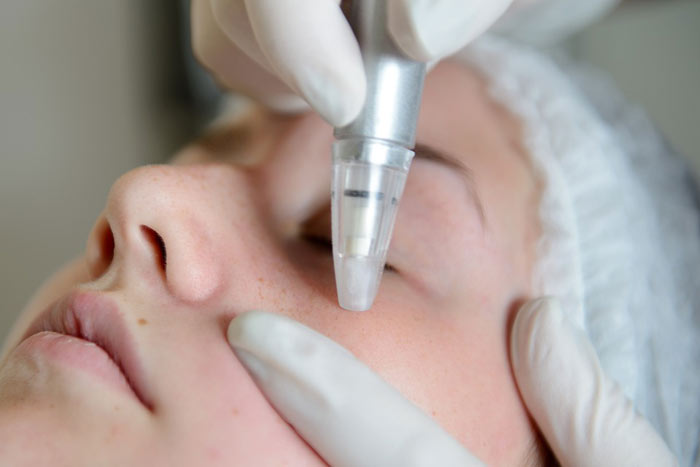Microdermabrasion is a skincare technique that has taken the public by storm. Often referred to by many as an instant face life, it is a simple technique that is quite effective and can be done at home. Commercially, it involves blasting aluminum crystals or sand. For domestic use, all you need is a state of the art microdermabrasion device and you are good to go. So how does microdermabrasion at home work?

How microdermabrasion works
Typically, a special device, for example, the Silk’n ReVit First Impression is placed in direct contact with the skin with no makeup on. The skin should be cleaned with soap and water to get rid of any makeup, germs or sweat that may be deposited on the outer surface of the skin. The device is powered by a DC current. A changeable filter is placed on the end of the device. This filter collects dead skin cells as it glides over the skin. These devices usually have multiple tips. The Silk’n ReVit First Impression, for example, has three tips:
- Course tip: it’s quite harsh on the skin and should be used on people with rough skin or those who have done microdermabrasion before.
- Fine tip: it’s very gentle on the skin and is recommended for people with very sensitive skin and beginners who are still finding their way with microelectronics.
- Precision tip: used around areas with sensitive skin such as the nose and the eye. This tip is typically used in addition to one of the two tips as it covers smaller areas and is a bit more specialized.
You get to choose the intensity of the microdermabrasion with two pre-sets: low and high. Larger amounts of dead skin cells should be combatted with the high setting while smaller amounts should be dealt with by the low setting. However, it is recommended that beginners use the low setting as they familiarize themselves with the microdermabrasion technique. An area should be worked on for between 3 and 5 minutes. During application, the process will involve pulling and tagging of the skin and as such may get a bit uncomfortable. This is because the skin is forced to stretch back and forth as blood is pushed to the surface. As the blood comes more and more towards the surface, your skin might turn red. This is quite common and should be no cause for alarm.
After microdermabrasion is done, you should rinse areas of the skin on which it has been done with cold water to cool them down and then apply moisturizer. You may notice scars and bruises in areas, where the skin got too stretched however they will quickly heal up. To avoid extreme damage to your skin you should not exfoliate more than two times a week. This allows enough time in between exfoliation for your skin to heal.
 Risks involved
Risks involved
- As this technique involves pulling and tagging of the skin, the pain will definitely be experienced.
- May result in redness, bruises, and sensitive skin
- May break blood capillaries in cases where the skin is too thin or the intensity of the microdermabrasion is much more than the skin can handle.
- May break down collagen which gives the skin elasticity and strength resulting in more wrinkles.
Benefits of Microdermabrasion
- Removes dead skin cells to achieve a flawless skin. Over time, dead skin is deposited on the surface as new skin cells grow under. These dead cells may clog skin pores making it difficult for the body to excrete substances for example through the production of sweat.
- Smoother and beautiful looking skin through vacuum stimulation.
- Improved skin tone, texture, and elasticity. The removal of dead cells from the top layer of the skin will mean that the skin will appear in its natural state without any blemishes. The collagen in living skin cells will make it elastic and its texture will be appealing.
- The procedure reduces the risk of developing age spots, fine lines, and acne scars. The skin battles these conditions using collagen. However, collagen is only effective in living skin. As such, once dead skin cells are removed from the surface of the skin, the collagen becomes effective. It strengthens the skin effectively doing away with sagging of the skin that causes acne scars and age spots.










